How school enrollment trends have changed in a post-pandemic Virginia
It would be difficult to describe Virginia’s demographic trends over the last few decades without using an adjective similar to disparate or unbalanced. Regional economic trends in Virginia have created a stark income gap and the largest differences in household incomes of any single state in the country. At the same time, many young adults moved away from southern and western Virginia for better opportunities elsewhere, and very few young adults moved to these regions to replace them. As a result, if the portions of Virginia outside its three largest metro areas—Northern Virginia, Richmond and Hampton Roads—were a separate state, it would have the oldest population in the country. In recent decades, Virginia’s public schools have mirrored this demographic divide. The state’s largest urban and suburban divisions fueled Virginia’s overall public school enrollment growth while most rural and small town school divisions experienced a decline in enrollment.
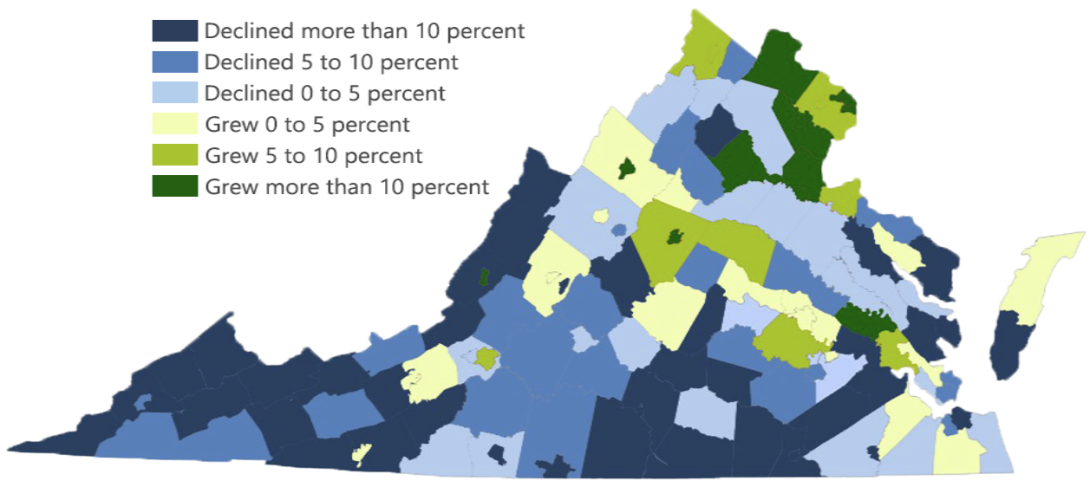
Source: Virginia Department of Education Fall Student Count
Public school enrollment was slowing before the pandemic
Yet, by the early 2010s, several new demographic trends were causing student enrollment growth to slow, even in the Commonwealth’s largest divisions. In 2013, for the first time since World War II, Virginia lost more residents to other states than it attracted. Many of those leaving Virginia were families moving out of the most expensive parts of Northern Virginia, slowing enrollment growth in what, for decades, had been the fastest growing part of Virginia. That same year, enrollment in Virginia’s public school kindergarten classes also began to decline due to a fall in births during the late 2000s recession. In 2015, after three consecutive years of increasingly fewer children enrolling in kindergarten, total elementary enrollment in Virginia’s public schools began to decline. By the fall of 2019, well before the pandemic, the exodus of families from Virginia and a steady decline in births had put Virginia’s public schools on course to lose approximately 50,000 students during the 2020s.
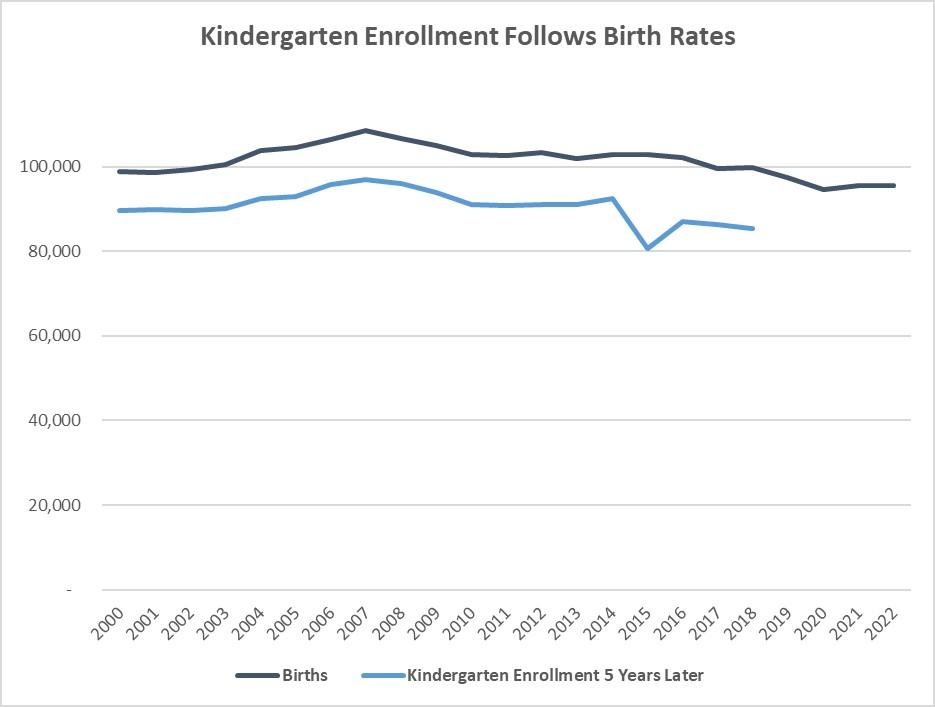
Public school enrollment has not recovered from the pandemic while private education has expanded
After Virginia’s public schools closed and shifted to virtual learning during the pandemic, tens of thousands of parents pulled their children from the public school system and switched to homeschooling or private schooling, resulting in the largest decline in public school enrollment in Virginia’s history. Many students returned to public schools once they transitioned back to in-person learning, but even in the fifth school year since the pandemic began, more than 40,000 students are still missing from Virginia public schools. On the other hand, the pandemic appears to have permanently boosted private K-12 education in Virginia. Before the pandemic, more than 90 percent of children born in Virginia enrolled in public Kindergarten. But by 2022, that share had fallen to 86 percent and in the fall of the 2023, the share had dipped closer to 85 percent.
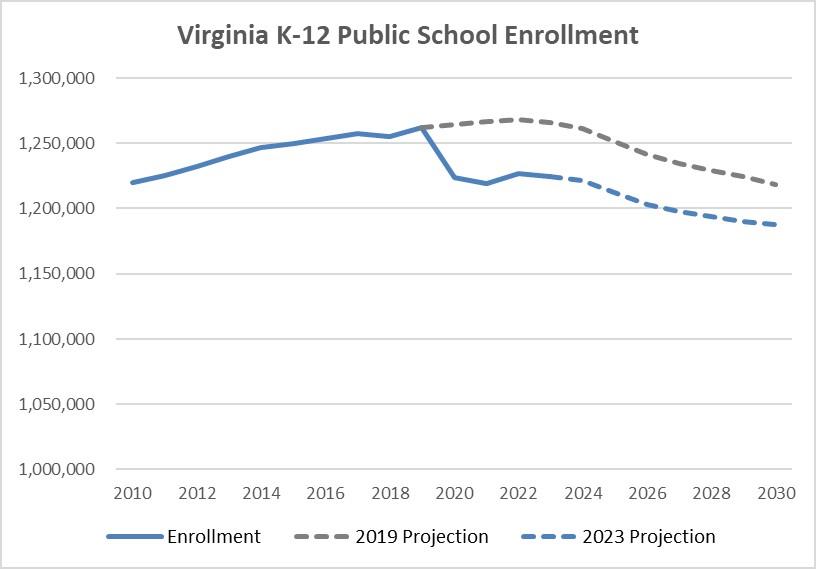
Lower birth rates will cause school enrollment to continue to decline
For the remainder of the 2020s, the pre-pandemic trends (principally lower birth rates) that had already significantly impacted enrollment are expected to persist and cause statewide enrollment to steadily fall during the decade. Initially, Virginia’s decline in births had been driven by a collapse in teen births, which caused public K-12 enrollment to fall during the 2010s in areas with previously high teen birth rates, namely many of Virginia’s rural counties and Hampton Roads. More recently, an increasing number of families leaving the DC metro area and a widespread decline in births among younger women has caused the number of births to fall precipitously in Northern Virginia. Between 2015 and 2022, the number of births in Fairfax County, Virginia’s most populous locality, fell by 15 percent. In Arlington County, the drop was even steeper, at nearly a quarter.
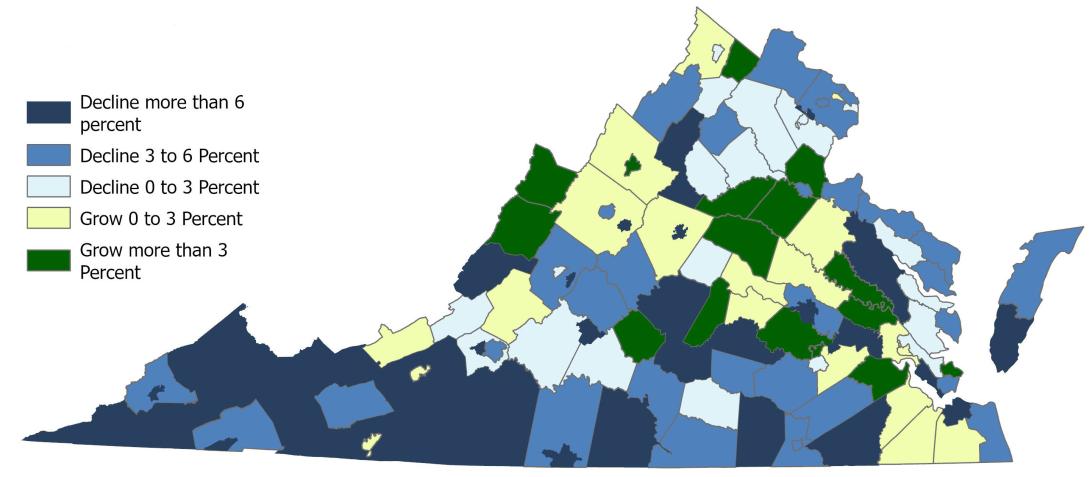
Source: Weldon Cooper Center 2023 to 2028 K-12 Enrollment Projections
In the enrollment projections for each of Virginia’s 131 public school divisions that the Weldon Cooper Center released today, close to three in four divisions are expected to experience a decline in enrollment between now and fall 2028. Large school divisions in Northern Virginia and the rest of Virginia that once drove enrollment growth are now expected to cause most of Virginia’s projected decline in enrollment. Fairfax, Loudoun, Henrico and Virginia Beach are all projected to shrink at a faster rate than Virginia as a whole. On the other hand, the divisions expected to see the fastest growth in enrollment are mainly located in rural counties or on the edges of metro areas. Two of Virginia’s least populated counties—Bath and Highland—are projected to account for two of the three fastest growing school divisions over the next five years.
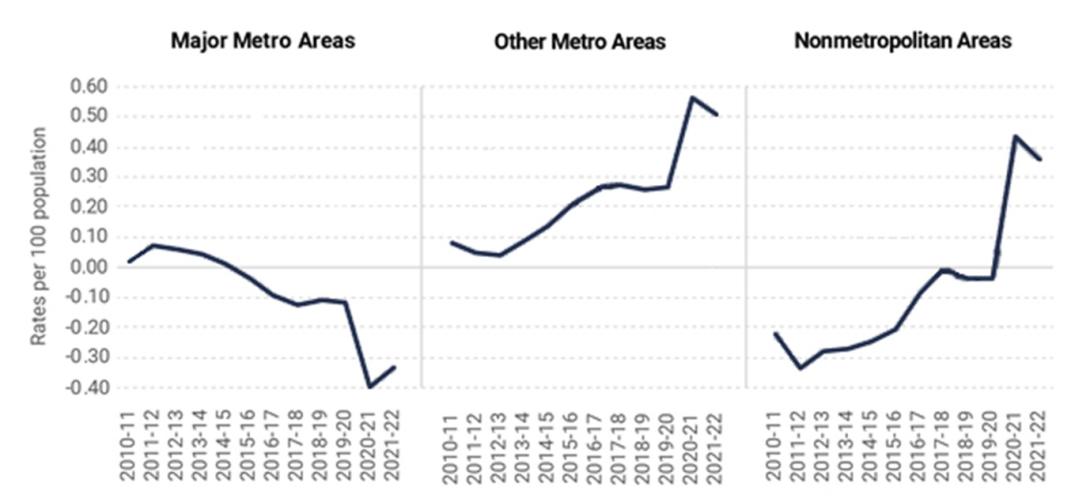
Source: Census Bureau Annual Population Estimates
The radical shift in demographic trends that most of the country has experienced since 2020—a sustained surge in migration out of most large metro areas into many small towns and rural areas—has added additional uncertainty to demographic projections. Yet, despite some uncertainty about where Virginia enrollment will increase or shrink, it is fairly clear that over the next decade the school-age population will shrink based on the fact that birth rates have fallen steadily over the last two decades not only in Virginia, but also in the U.S. and in most other countries. A shrinking school-age population will certainly impact not only public school enrollment but college enrollment, labor supply, and other areas of the economy.
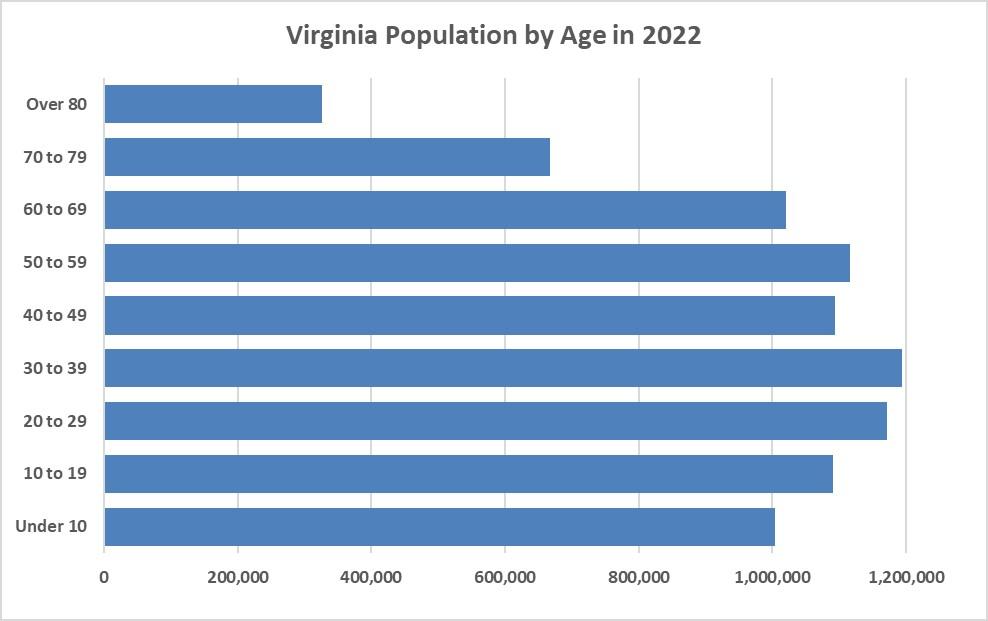
Currently, there are nearly as many Virginians turning 65 as 18, helping squeeze the labor force supply. In addition, given that Virginia’s population under age 10 is 15 percent smaller than those in their 20s, it is likely that the labor supply will be further diminished in future years, and with fewer young people, Virginia’s college enrollment will also likely decrease. The demographic divide that has been so prominent in Virginia should lessen during the 2020s as both Northern and Southern Virginia experience shrinking enrollments and a tightening labor supply.


